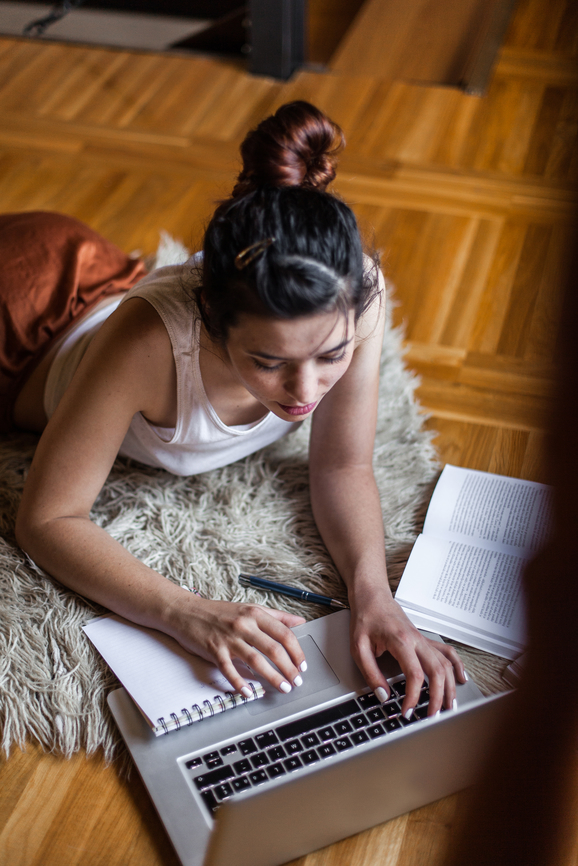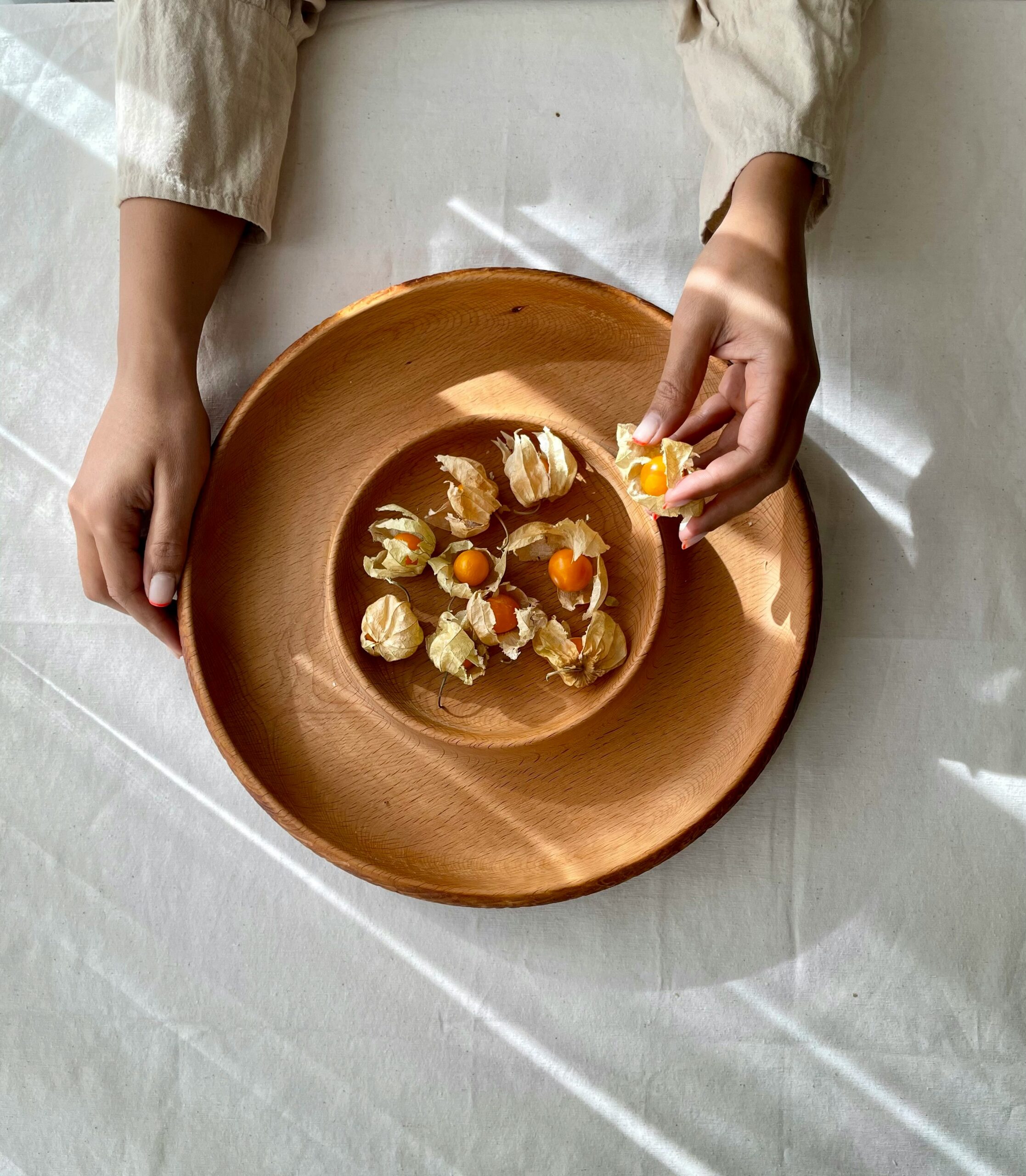
99 Study Tips To Start Your School Year Right
Happy back-to-school season! We have no idea where the summer went, but we do know that it’s officially September — and the semester is starting (if it hasn’t already).
Whether you’re an undergrad, a grad student, you’re a continuing learner, or you have kids that are heading back to school, you’ll find 99 of our best study tips to start your school year off on the right foot. Some of these are no-brainers, like getting enough sleep or forming study groups. Others might be brand new tips — like apps and software to help you study, focus, or organize your time.
You’ll find practical in-class tips along with self care ones, too, since taking care of yourself can be just as essential for performing well as studying is. And if you have to do some back-to-school shopping, check out our guides to sustainable backpacks and how to mindfully and sustainably go back-to-school shopping.
Get organized!
1. Circle important test, quiz, and due dates on your calendar at the beginning of the semester — or highlight them if you use a digital planner like Google Calendar.
2. Color-code your important date markings by class, too!
3. Create a study schedule at the beginning of each week, or leading up to each test or due date — you’ll thank yourself later.
4. Keep daily to-do lists, too.
“Create a study schedule at the beginning of each week, or leading up to each test or due date — you’ll thank yourself later.”
5. And prioritize those to-do lists. I like to star my three non-negotiable tasks at the beginning of each day, so I know I’m getting those done first. Then, if anything has to get pushed to the next day, it’s the not-so-important stuff.
6. And keep weekly to-do lists or goal lists. That makes it easier to break things down day by day, and to see the bigger picture of what needs to get done each week.
7. Check off completed items on your lists! There’s nothing more satisfying.
8. Organize your study materials, too. If you can, use different colored folders and notebooks for each class — bonus points if you can coordinate those colors with the ones in your planner!
9. Make sure you always have extra pens — in your bag and at your desk.
10. If you take notes electronically, keep those organized, too. Electronic notes are especially easy to search by subject or topic.
11. Google Drive is great for organizing study materials electronically and by subject.
12. Dedicate a section of your planner or a separate notebook to studying. Use it to write down what you need to study or tasks that need completing, along with what topics you need to focus on more or less.
“Google Drive is great for organizing study materials electronically and by subject.”
13. Log your study hours while you’re doing this, too, so you can see how much time you’re spending on each subject.
14. While you’re tracking your studying, reflect and adjust as needed. Especially when you receive grades back.
15. Labels! Label all notebooks, folders, planners, etc., so there’s no confusion.
16. Establish routines. Section off certain times or certain days for studying certain subjects, to help yourself get in the groove.
While you’re in class…
17. This might go without saying, but be prepared — come with all needed pens, notebooks, textbooks, etc.
18. And do the readings. Seriously (it makes a huge difference).
19. Arrive early. You’ll be in a much more relaxed, alert mindset once class begins.
“Arrive early. You’ll be in a much more relaxed, alert mindset once class begins.”
20. Actively listen, and ask questions when you need clarification. Most likely, someone else in the class needs the clarification, too.
21. Take notes, whether it’s on your computer or in a notebook. The act of writing down notes will help you better remember the material, even if you never go back to review them.
22. And when note-taking, highlight or otherwise indicate the most important points.
23. After class, go back through your notes to summarize key information and connect concepts.
24. If your class offers recorded lectures, take advantage of them and rewatch while you’re studying.
25. And if they don’t, ask if you can audio record lectures on your own.
26. Snap photos of diagrams or other visuals shown in class.
27. Jot down any homework assignments or topics that need studying in your planner the minute they’re assigned — not when you get home — so you don’t forget.
“Don’t go to class on an empty stomach.”
28. Don’t go to class on an empty stomach.
29. Bring a discreet snack if it helps you stay more alert in class.
30. And don’t forget water.
31. Keep your phone on silent and keep your laptop closed when you’re not using it to limit distractions.
And outside of class…
32. If you have questions while you’re reviewing material at home, jot them down and ask them in class.
33. Read your textbook or notes out loud — it can help you absorb the material much better while you’re studying.
34. Make sure you fully understand concepts before trying to memorize them. It’s easier to remember the “what” if you know the “why” and “how.”
35. Use mnemonic devices to help you memorize tougher concepts.
“Use mnemonic devices to help you memorize tougher concepts.”
36. Make notes in the margins as you read, and jot down a summary after you read each chapter to make sure you’re absorbing it.
37. Review your toughest notes right before you go to bed, as that can help you turn those short-term memories into long-term ones.
38. Exchange numbers with a classmate or two. Making connections is vital, and that’s the first step.
39. Form study groups. Get together with small groups of classmates so you can help each other study and discuss class material.
40. Look for organized study groups at your school, too.
41. When you study with others, pretend to teach each other certain concepts. This will further help you understand the “why” and “how,” not just the what.
“When you study with others, pretend to teach each other certain concepts.”
42. Share notes with classmates. They might have something you missed, and vice versa.
43. And the more friends you make in your classes, the more you can count on people to send you notes if you have to miss a class.
44. Even co-studying is helpful — if you have friends you aren’t in any classes with, you can still get together and study or do homework side by side, holding each other accountable.
45. Whether you’re engaging in a study group or co-studying, try to make it a regular thing — always Tuesdays at 6 p.m., for example.
46. If you’re having trouble in a certain subject, engage in peer tutoring — look for student tutors that excel where you need help.
47. Look online, too. You can find study forums for pretty much any subject or topic you need.
48. Create study accountability partners. Maybe you don’t always study with each other — but rather, you and a classmate can hold each other accountable for completing certain tasks.
“Create study accountability partners.”
49. Ask successful classmates for study advice.
50. If your school or class offers review sessions before tests, attend them.
51. Take advantage of your professors’ office hours.
52. Socialize with your classmates, too. Downtime is important.
Utilize tools and software.
53. Use index cards to make good old-fashioned flashcards.
54. Or flashcard apps like Quizlet, Anki, or Brainscape.
“Use index cards to make good old fashioned flashcards.”
55. You can even make collaborative Quizlet flashcard stacks with your classmates.
56. And when you’re quizzing yourself, jot down the answers you get wrong in your notebook so you know what you need to focus on.
57. There are so many other great software tools you can utilize, too. Asana or Trello can help you better manage your time, plan tasks, and track deadlines.
58. And mind-mapping tools like MindMeister or XMind will help you better visualize and retain the information you’re studying.
59. Video platforms like YouTube or Khan Academy have countless video lessons to help you better understand complicated topics.
60. And practice test platforms like Kaplan, Princeton Review, or Test Prep Review can be so helpful while you’re preparing for tests and quizzes.
61. Use digital sticky notes on your laptop to jot down reminders and important notes or dates.
“Use digital sticky notes on your laptop to jot down reminders and important notes or dates.”
62. If you’re having trouble finding a peer tutor, online tutoring services like Chegg Tutors or Tutors.com will help you with personalized learning in the subjects for which you most need it.
63. If you like to study in the library, invest in a pair of noise-canceling headphones.
64. Figure out what kind of a learner you are with this test — auditory, visual, or tactile.
Get in the mood.
65. Decide on a designated study space in your home, whether that’s the desk in your room, the kitchen table, or somewhere else.
66. But don’t study in bed. It’ll make your brain associate the bed with stress, so you might have trouble sleeping.
“Don’t study in bed. It’ll make your brain associate the bed with stress, so you might have trouble sleeping.”
67. And you might want a small rotation of study spots, too. Maybe most topics are studied at your desk, but one is at the dining table and one is in the library.
68. Making sure your study space is clean and organized will go a long way.
69. Decorate it, too! We recommend keeping it minimalistic and calm, but do whatever works for you. Maybe you get some nice dried flowers, or you put a print or painting you like above the desk.
70. Invest in a good desk chair.
71. Make sure you have a desk lamp so the space is well-lit.
72. Pick up a physical timer. This’ll help you track your study time and know when it’s time to take a break without checking your phone.
73. Make sure your space isn’t too warm or too cold.
“Pick up a physical timer. This’ll help you track your study time and know when it’s time to take a break without checking your phone.”
74. Use a study playlist, if that works for you. Some folks like studying to jazz or classical music — and Spotify has some great playlists for this purpose. White noise can be great here, too, helping you zone in.
75. Reduce distractions by turning your phone on silent, or putting it in another room.
76. Utilize apps, too — apps like Freedom help you block distractions on both your phone and computer, while Session is a combination Pomodoro timer and distraction blocker.
77. And speaking of the Pomodoro method, it’s a study technique that encourages you to take frequent, short breaks. While there are apps for the method, you can also use it with a timer. The method usually involves studying for twenty-five minutes, then taking a short five or ten-minute break.
78. Keep water and snacks within reaching distance.
79. Or use a reward system. Maybe on your next study break, you get to go get a snack.
80. Move your body. When it’s time to take a break, make sure you move in some way, even if it’s just walking around the room.
“Schedule what you’re planning on studying when, so the daunting task of studying is broken down into smaller bits.”
81. Block out your study sessions. Schedule what you’re planning on studying when, so the daunting task of studying is broken down into smaller bits.
82. Do the most important tasks first, and check items off your to-do list once they’re completed.
83. Schedule your studying time according to what works best for you, not what you think others are doing. Maybe you prefer studying in the morning, or late at night, or periodically throughout the day.
84. Switch between topics while studying every hour or two to keep yourself engaged. Three hours on the same topic will lead to distracted studying by the end.
Self-care tips while studying…
85. Light a candle. It’ll set the mood, and give you some nice aromatherapy.
86. Make sure you’re feeding yourself with healthy foods. Besides your study snacks, prioritize cooking and eating nourishing meals.
87. Dark chocolate, nuts, hummus, eggs, fruit, and yogurt make some of the best brain food.
88. Sleep.
“Dark chocolate, nuts, hummus, eggs, fruit, and yogurt make some of the best brain food.”
89. Sleep. (It’s that important. No matter how much you study, you won’t perform your best if you’re sleep-deprived.)
90. Stay active. Whether you have an intense gym regimen or you just go on daily walks, keeping your body active and moving is essential.
91. Exercising right before studying can also help you zone in and focus better.
92. Dress comfortably — we always recommend loose clothing made of natural fabrics like cotton.
93. Practice mindfulness to manage your stress levels. Maybe this is ten minutes of meditation before or during a study session, or afterward to get you out of that stressed headspace.
94. Get fresh air every day. A walk around the block makes a great study break.
95. Stretch at least once a day, too, especially after you’ve been sitting at a desk for a few hours.
“During a study break, write down everything that you’re grateful for — including the opportunity to study.”
96. And practice gratitude, too, another simple mindfulness technique that can actually go a long way. During a study break, write down everything that you’re grateful for — including the opportunity to study.
97. A little caffeine boost can be great, but avoid it any time later than the early afternoon. And limit your intake, too. Too much caffeine can make you crash or ruin your sleep.
98. Seek support if you’re feeling overwhelmed — many schools can connect you with counselors.
99. Decide on a stopping time, and stick to it whenever possible. Sleep, downtime, and social time are all vital to your mental health.
Natalie Gale is a Contributing Editor at The Good Trade. She is a Boston-based freelance journalist. When she’s not writing about art, food, or sustainability, you can find her biking to the farmers’ market, baking, sewing, or planning her next Halloween costume. Say hi on Instagram!




